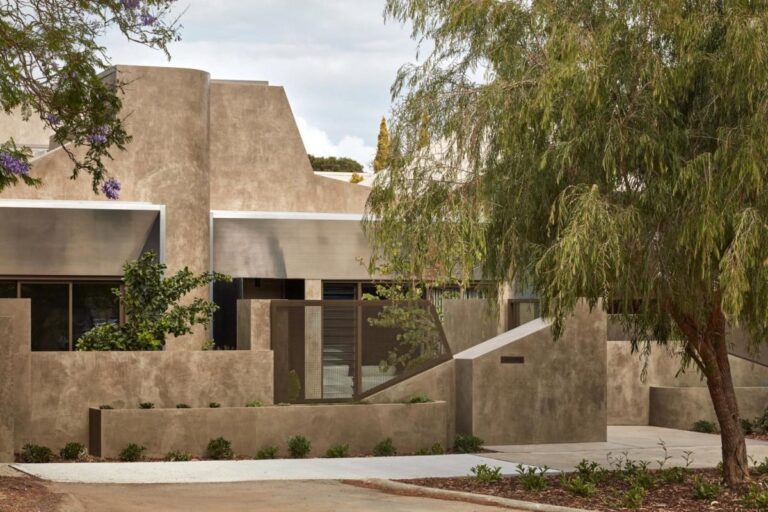An Australian architecture firm has built an innovative new home that uses unexpected materials in its construction.
According to Dezeen, Kin has completed construction of the Declaration House in Subiaco, Australia, using hemp render for the structure's concrete.
The company says the home's unique design “exaggerates the traditional features and proportions of local cottages to create a modern home that is sensitive to its context.”
Organized around a central courtyard and pool, the design incorporates daylight windows and large glass doors to flood the rooms with natural light. A central courtyard and doors allow for natural ventilation, heating and cooling. But the star of the show is the unique linen-like concrete.
“The linen render provides a unique, rustic look that complements the natural, organic feel we were aiming for and integrates seamlessly with the home's surrounding environment,” Kin State University told Dezeen. Ta. “It also has superior insulation properties that make homes more efficient at heating and cooling, reducing reliance on man-made systems. It also provides significant acoustic benefits by absorbing sound and reducing noise levels. You can.”
According to Hempitecture, hempcrete is made using hemp, lime, and water. The company that created it says the pores in hemp help regulate temperature and insulate, making the concrete breathable and keeping your home cool in the summer and warm in the winter.
Watch now: Experts share one belief that 'two-thirds' of US population supports across political lines
What's more, Hempitecture revealed that Hempcrete's curing process draws in carbon dioxide from the atmosphere at a rate of about 1.5 pounds per pound of cured concrete. This is in addition to the sustainability benefits of using renewable resources like hemp, rather than the traditional use of sand or finely ground stone, as rendered hemp concrete reduces a building's carbon footprint. means to reduce.
Net-zero homes like this, which minimize owners' utility bills and reduce pollution, are becoming increasingly common. Architects in Westport, Maine, recently completed a unique structure that uses solar panels for power and giant windows to regulate temperature.
And a Maryland man has designed a home that runs on its own microgrid to reduce energy usage to virtually zero. Even mobile home parks are moving toward net-zero energy use and carbon emissions.
As the fight against global warming gases continues, it is clear that this type of unique building technology will become more and more popular.
Join our free newsletter for weekly updates on the latest innovations that are improving our lives and shaping our future. Also, don't miss this cool list of easy ways to help yourself while helping the planet.

